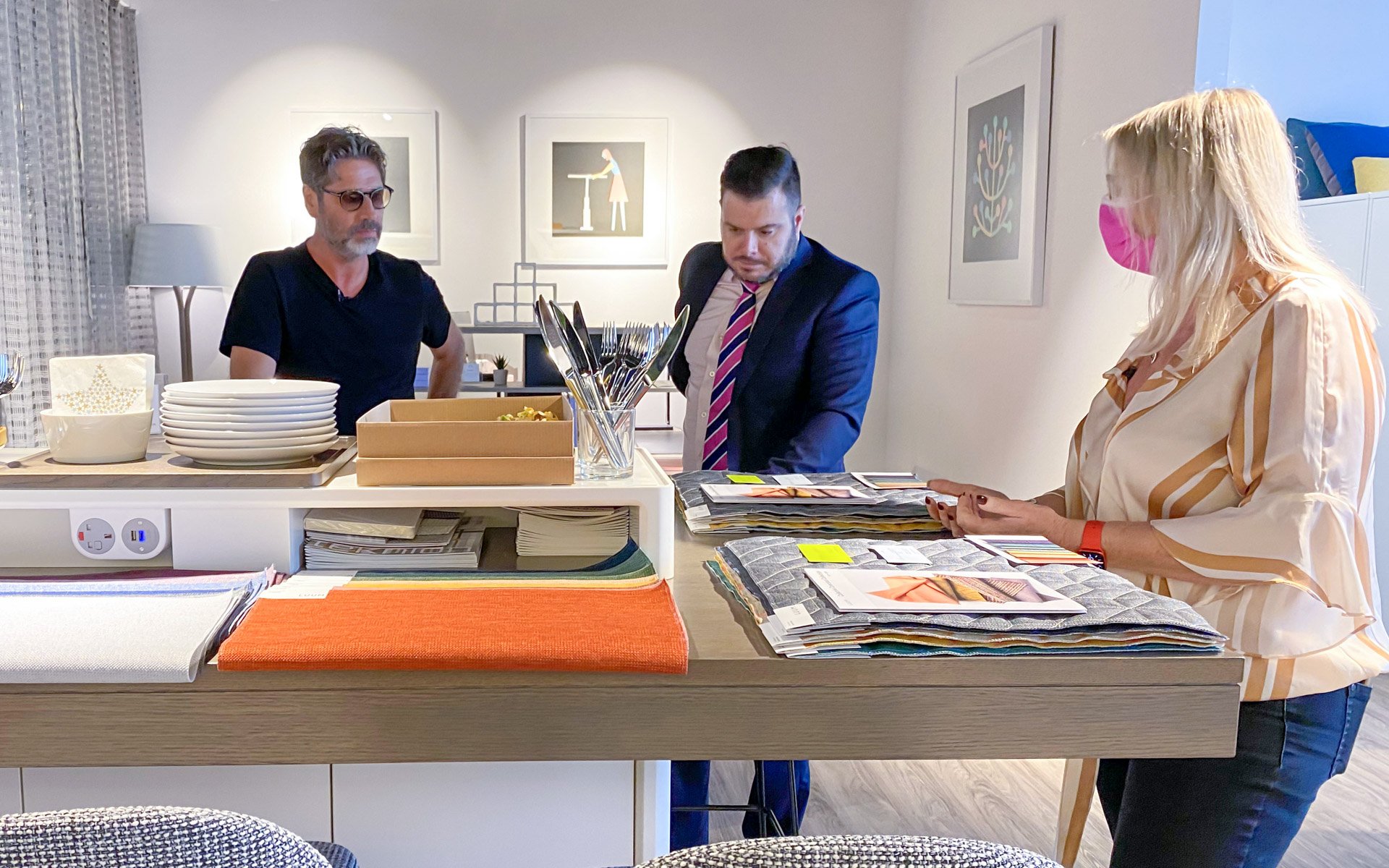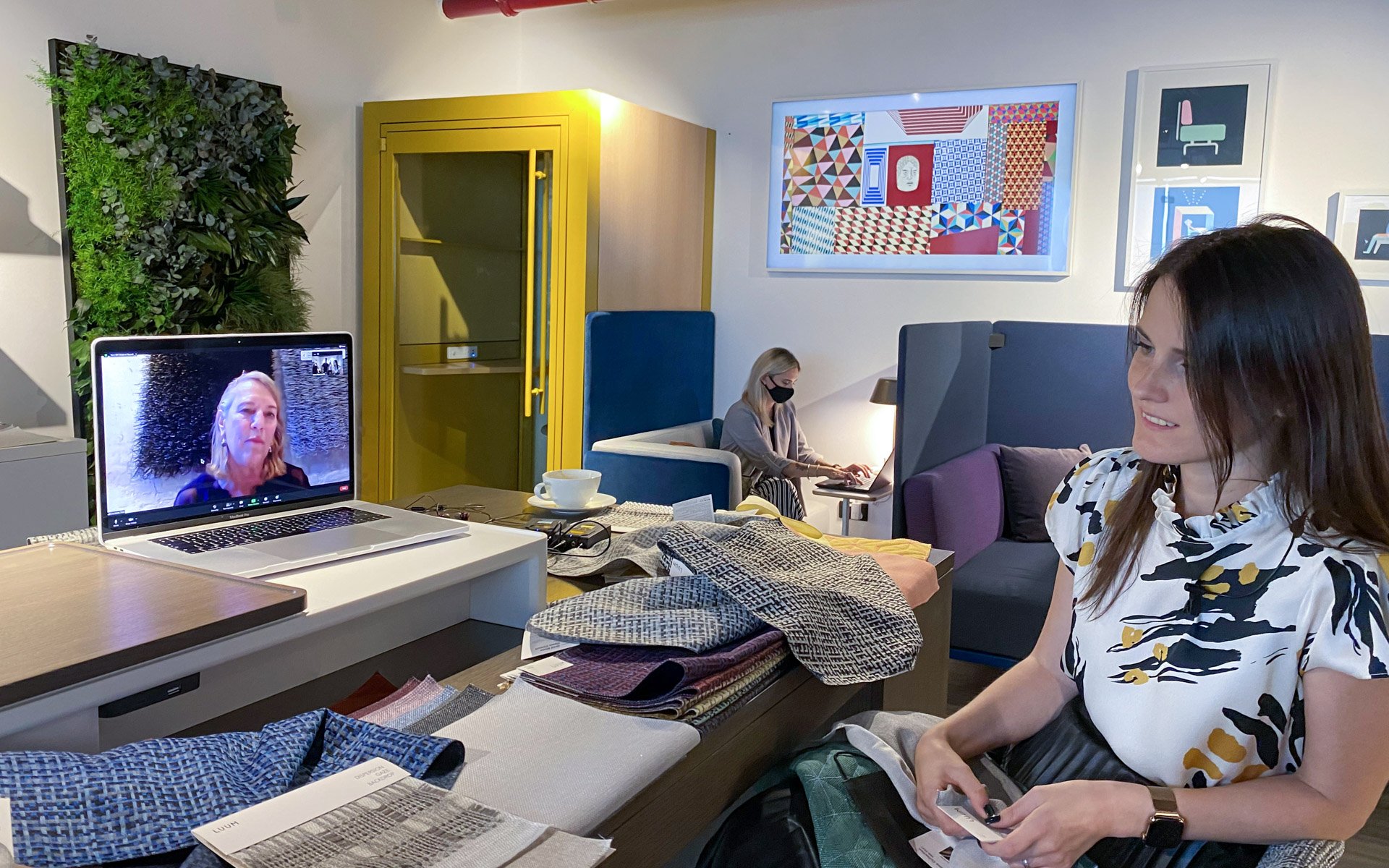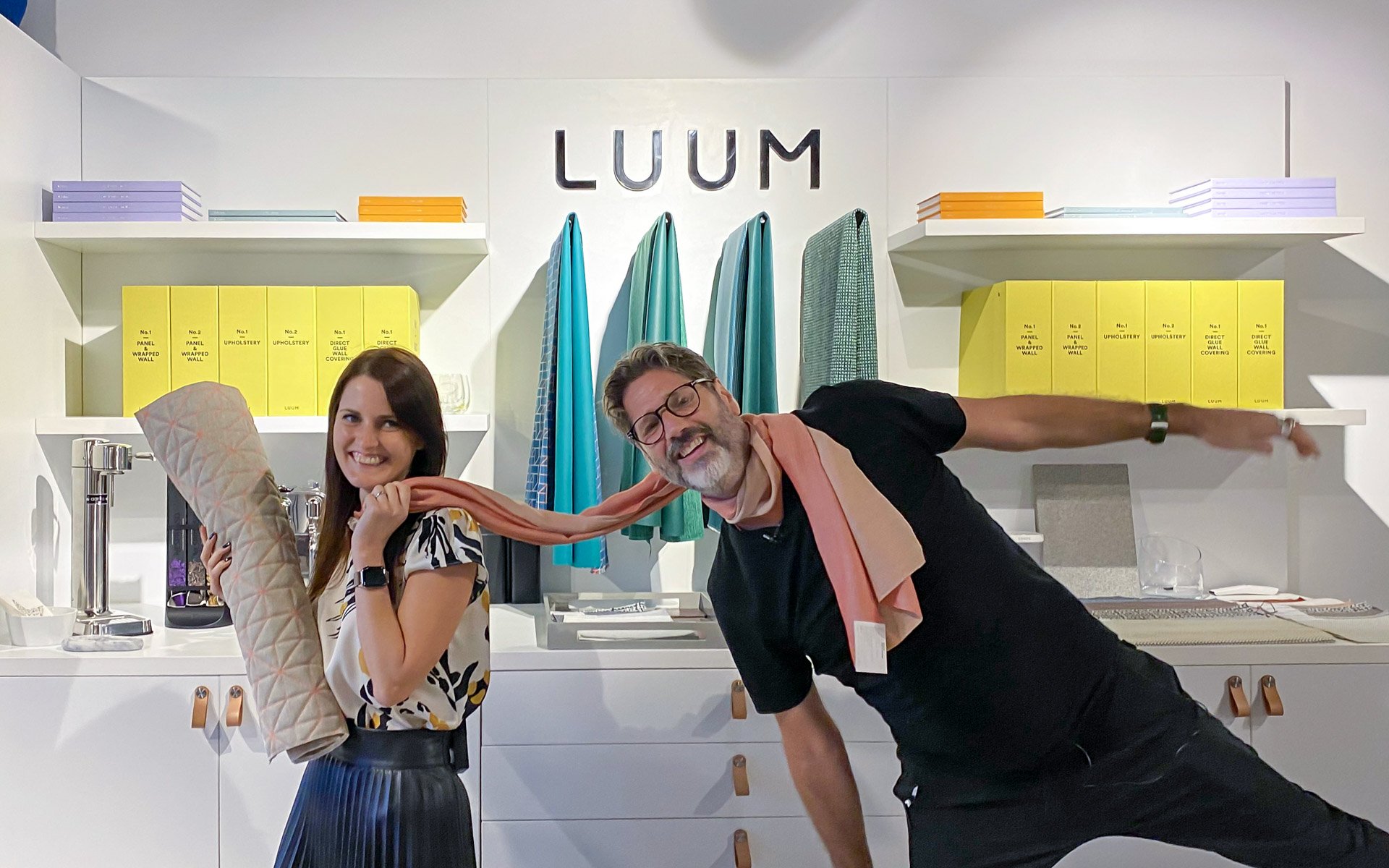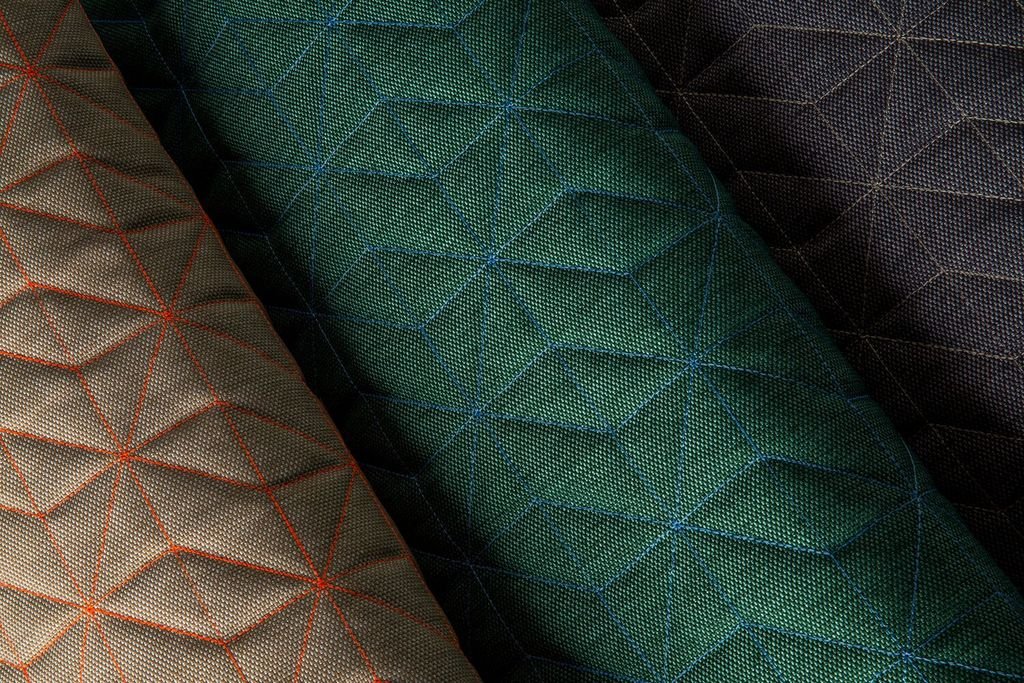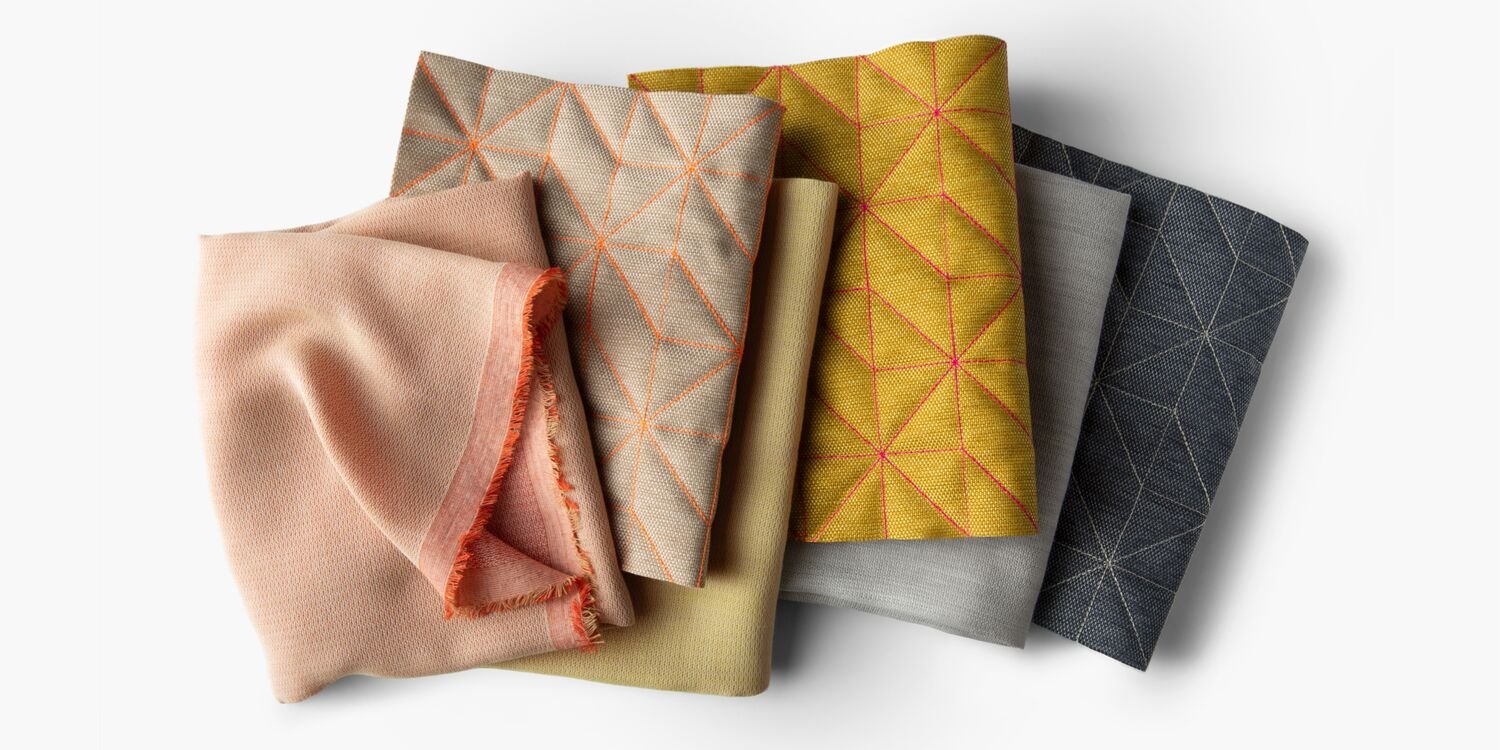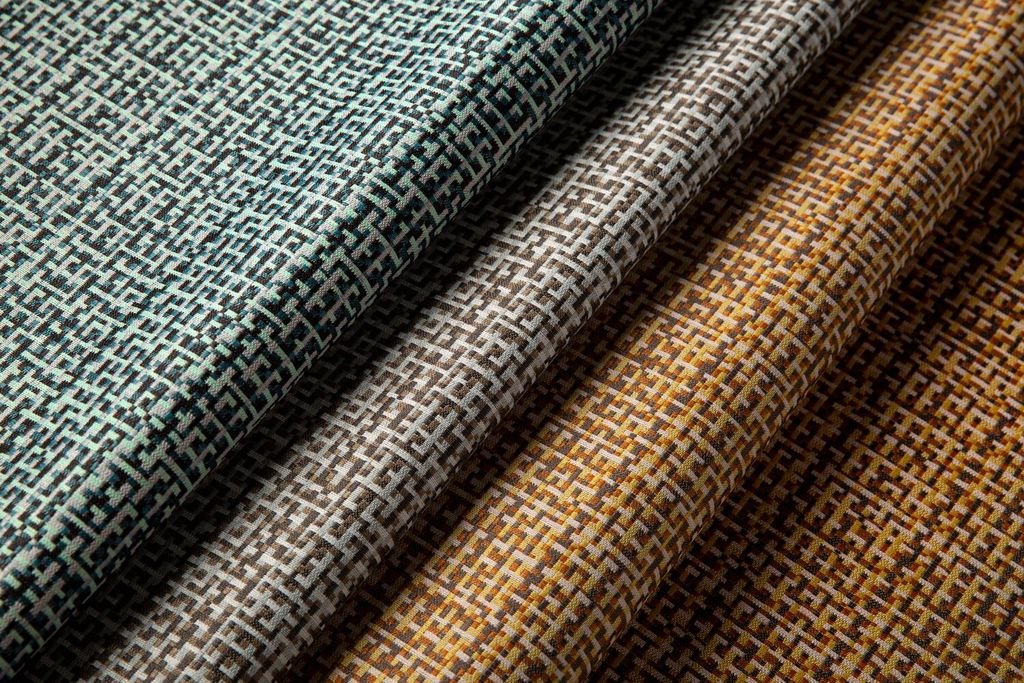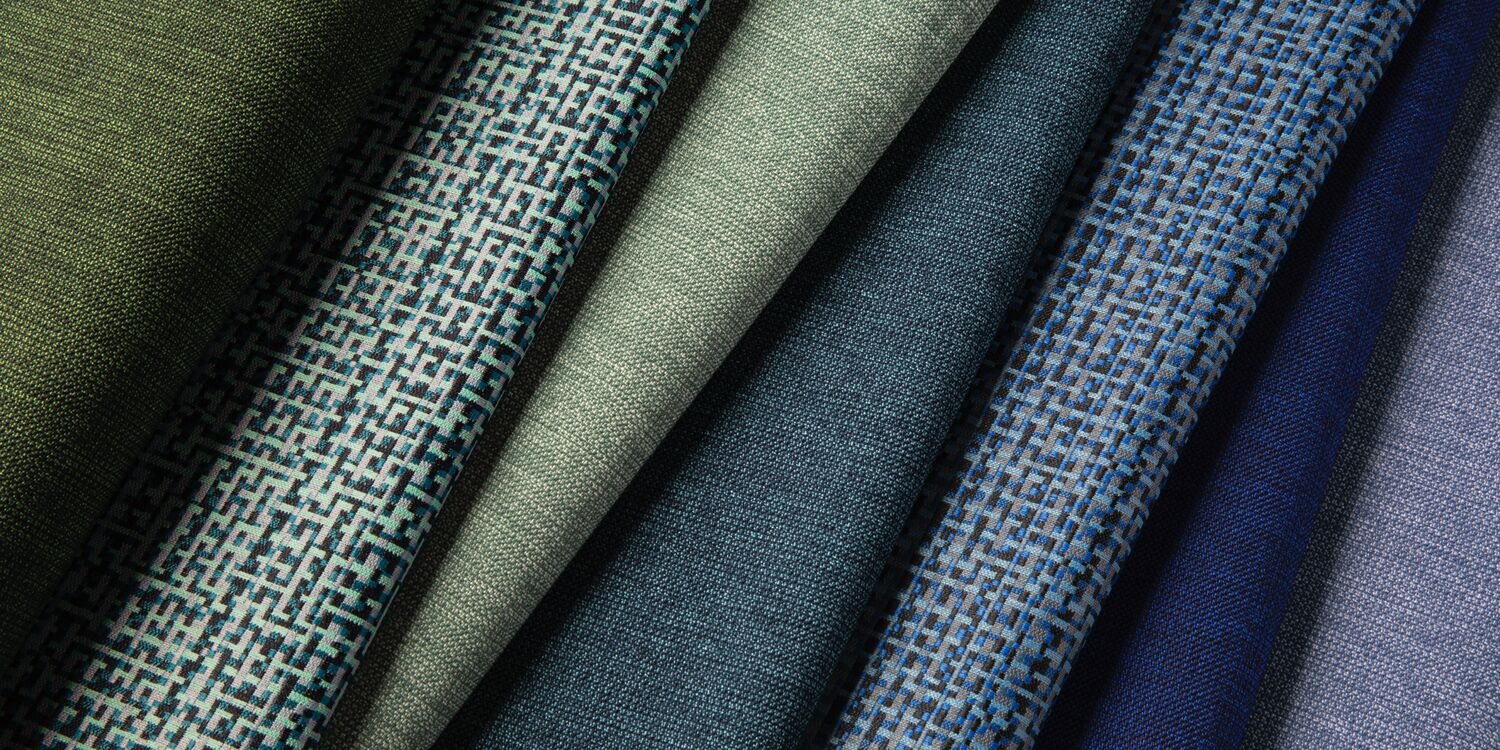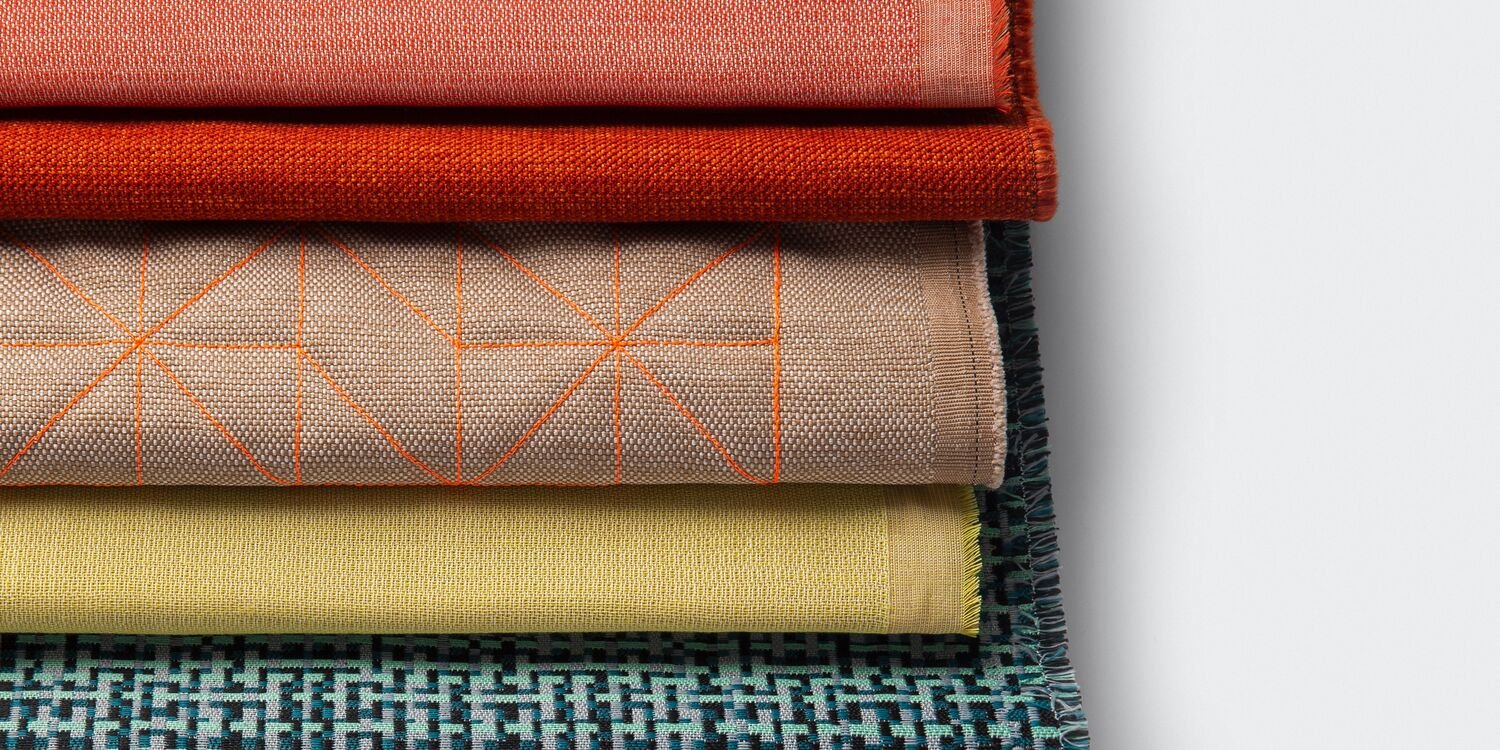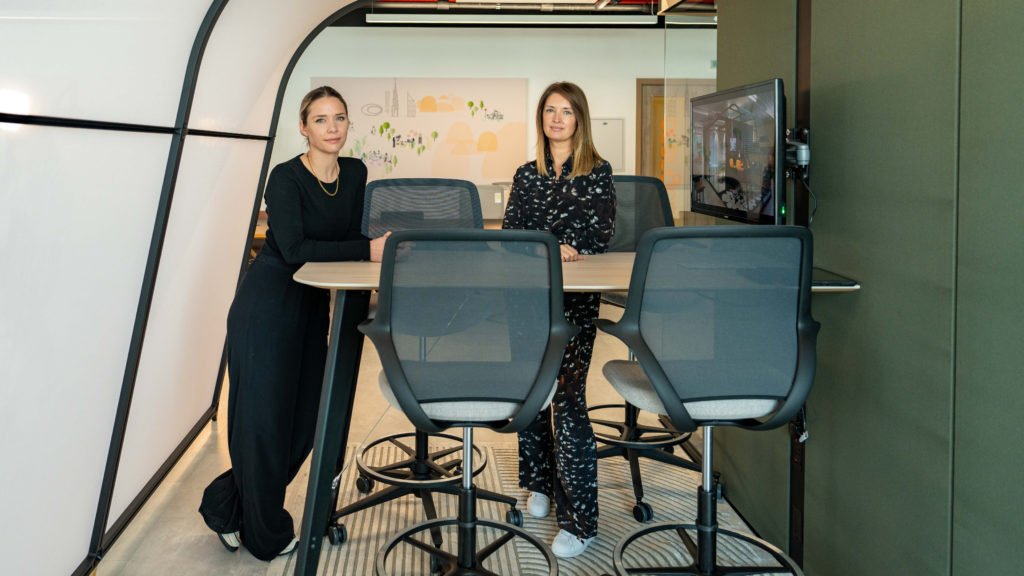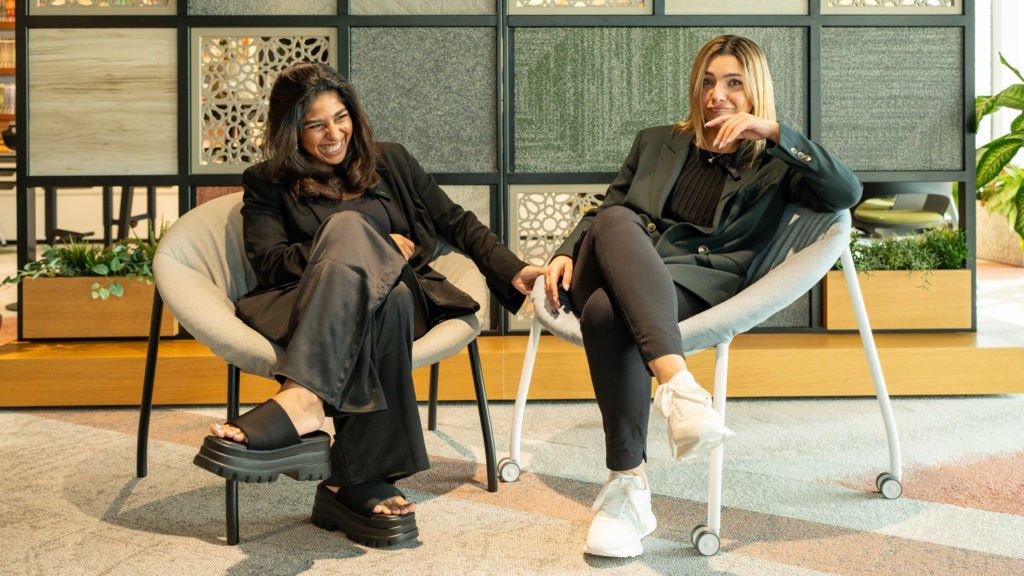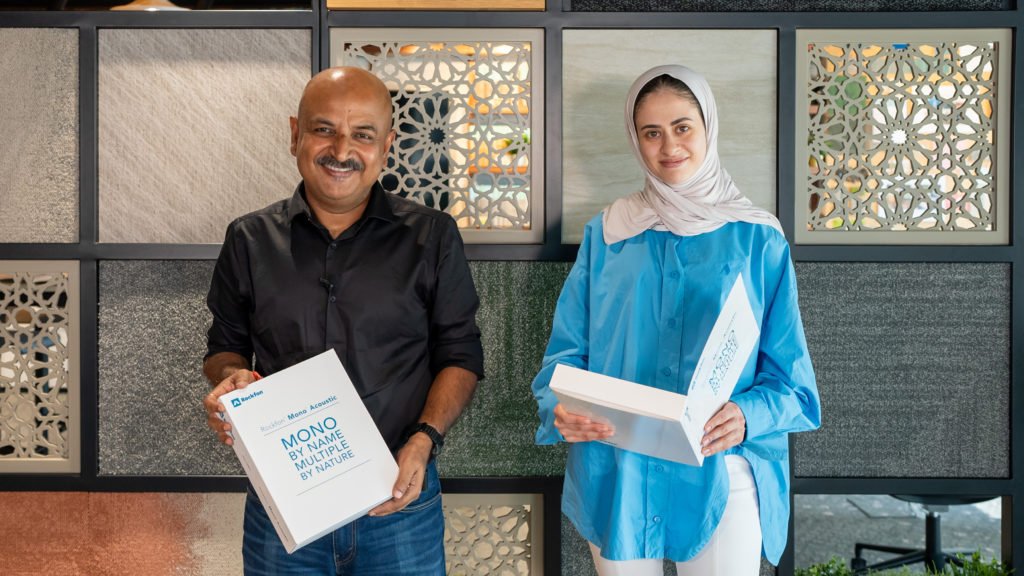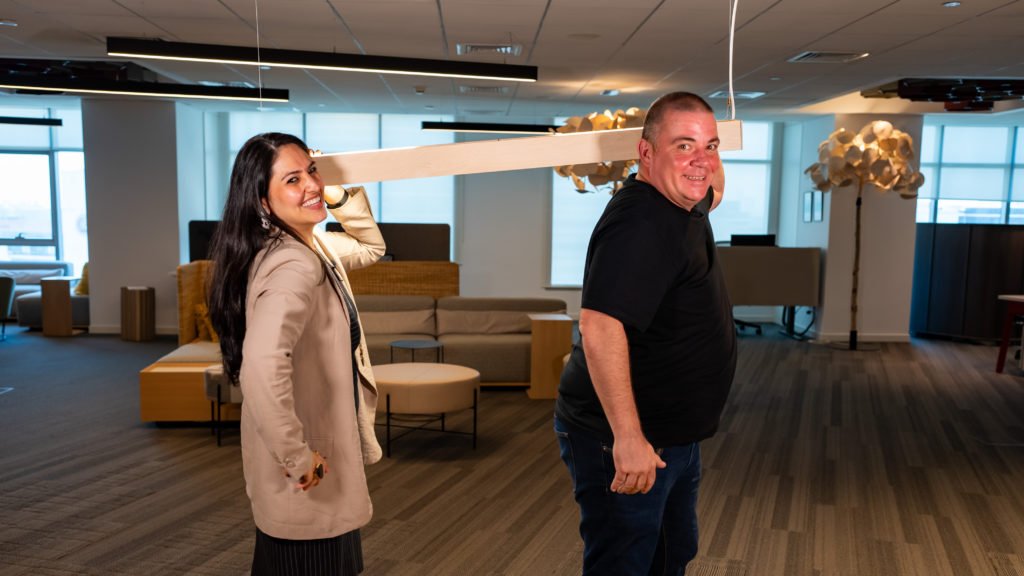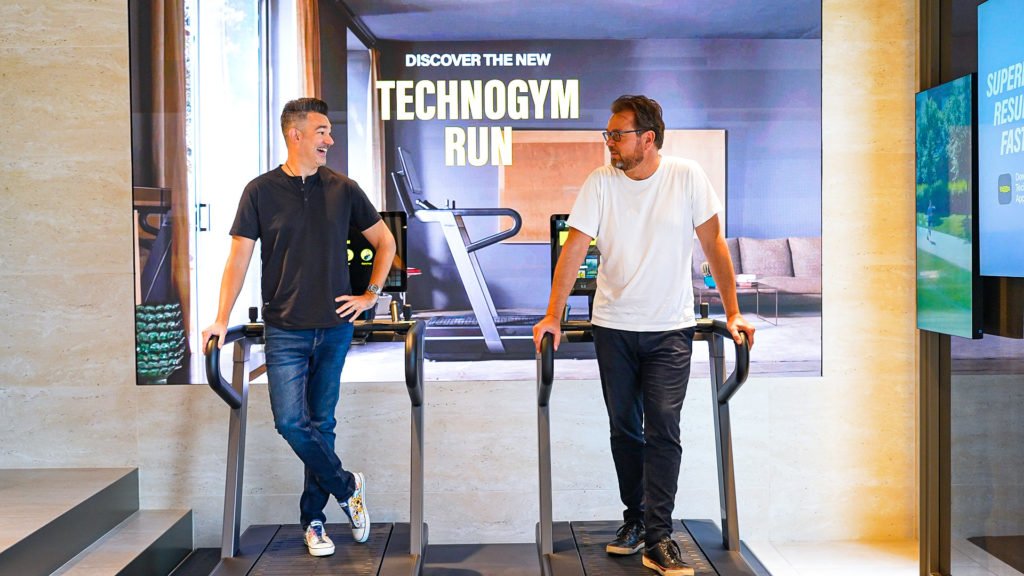Read Between The Fibres
Each Luum product that Suzanne designs is a carefully crafted story weaved into fabric. In addition to the story, it prioritises domestic manufacturing, local and traditional craftsmanship, and equally important – sustainability, innovation, and human-centric design. “The Collective Conscious collection consists of four textiles that reflect our readjustment to a slower, more connected life. It also highlights our predominantly domestic innovation and craftsmanship, and this collection focuses on enhanced user comfort and wellness”, says Suzanne.
“We do a lot of research on what’s happening around the world. We look for trends, patterns, cultural shifts. We go to museums. We watch the fashion runway shows and we are clued into the art world. We’re trying to understand and sort of make sense of the social consciousness of what’s happening in our society”, explains Suzanne. Her focus for this collection was to develop better relationships with the mills and other key components of the domestic ecosystem. Additionally, she strived to prioritise sustainability and innovation and to bridge the two.
“We’ve named the collection Collective Conscious because it reflects the theme of 2020 that has flowed into this year,” says Suzanne. “It’s really about how we work together and how we’ve understood the importance of slowing down. COVID has definitely taught people how to be more conscious when doing things.”
What makes these collections unique is the use of renewable, recycled and biodegradable materials to mimic artisanal designs and textures. With Collective Conscious, Luum aspires to re-think how materials shape the way we perceive our news space. It seeks to face new challenges with workspace design head on, while keeping comfort and aesthetic in mind. The entire collection is made from recyclable materials, and is also post recyclable as a product too.
There are four lines in this collection – Crossgrain, Grid State, Gaze and Scale Factor. Of the four, we personally love Grid State. It’s got an interesting pattern and texture to it. But what’s most interesting is that Grid State is the first biodegradable product of its kind to be introduced in the industry. It is Luum’s first textile made of post consumer, recycled, biodegradable polyester and has an impressive list of properties: it’s recycled, biodegradable fibre content has a lower impact on the environment, and it expands the fabric’s range of applications with its bleach-cleanable and multipurpose use. “About 55,000 tonnes of upholstery fabric from our industry is put in landfills daily!” says Suzanne. :That’s an incredibly large volume that is sitting there as a landfill, so there’s a definite need for innovation here.” The team has been working with a chemist while two of their suppliers are focusing on the polyester compound’s chemistry to explore the possibilities of making synthetic fabric biodegradable.
Suzanne explains the approach through a delightful example: “We all know broccoli’s a healthy green vegetable. We want our kids to eat it because of its nutrition value. But most children hate the taste of broccoli. So what do you do? You add cheese to it and mix it up. In a similar fashion, we add another biodegradable layer to the polyester layer that penetrates into the fabric. Leave it in an aerobic environment, and the lack of air will make it decompose naturally. In doing so, it contributes to the circular economy and does its part to preserve the planet for future generations.”
Paul Bishop: Overall, great collection. You can tell there’s some deep thought behind the design and production. There’s an interesting philosophy here. I certainly like the Crossgrain the most. I love the feel of the texture and colours, and would love to use it in a hospitality project. Close second is Scale Factor, because of the interesting patterns and I see it going well with a very millennial focused design. I really like the visual dynamics at play.
Vaida Buchrotaite: The sustainability and cleanability element is a huge selling point for me, and it is so important in the hospitality segment now. There are very few fabrics out there that offer this level of design and sustainability together. It’s multipurpose too which makes it even more useful in regards to us designers trying to figure out where to use it in a project. They do feel a bit heavy, but can accommodate 100,000 rubs, so I’d use these in a high traffic area preferably.
Collectively Conscious For A Connected Lifestyle
Each of the four fabrics within the collection have their own distinct designs, but come with common underlying characteristics. Grid State, Scale factor, and Crossgrain are made from recycled content and are abrasion tested to be Wyzenbeek 100,000 double rubs. The Gaze fabric is made from renewable content. From the four, only Grid State and Crossgrain are intended for multipurpose use.
Like we mentioned before, Grid State is certainly our favorite. It is inspired by weave patterns infused with colours to mimic a jacquard artwork, and comes in 12 colourways. Besides being biodegradable, it is also bleach cleanable and REACH compliant, making it easy to clean without the guilt of using harmful chemicals. Cleanability is an important component that was built into the collection from the start, and was given a higher priority with the onset of the pandemic. This is a high-performance product that was two years in the making, and looks great on a variety of products!
Scale Factor is another interesting one. It has a modern yet soothing design, embodying wellness and comfort. The design was inspired by Bauhaus patterning and comes in five colourways. Upon closer look, you’ll notice the custom dyed embroidery on Actuate, a classic and versatile Luum textile. It really is delicate craftsmanship meets manufacturing excellence. The stitching technique creates tonal colourways and gives it an angled look that mirrors the straight lines of modern architecture.
Crossgrain is the other multipurpose product along with Grid State that can go on upholstery, walls, panels and screens. Plus, it comes in 15 colourways! The texture is meant to feel like raw wool, and is an ideal fabric for comforting, soothing environments. The fourth range in the collection is Gaze, a beautiful, soft drapery-like material with a ‘summery-winter’ weave that is two-toned, wool on one side and polyester on the other, and comes in five colourways.
Paul Bishop: Speaking from a technical perspective, the product is well set up for us to work with. The designs and colours are clear and you know after a quick skim through the information where it goes best. It’s inherent acoustic properties are great too. I like the diversity in pattern, texture, and colours. It’s a great visual attraction and sort of balances the attention from going to the furniture. There’s both an aesthetic and commercial viability to it which I like.
Vaida Buchrotaite: It checks all the boxes in terms of functionality and aesthetics, and that is just the start. There is so much depth and character to the product, that I hope clients will take time to evaluate it based on that. The customisation options are a huge plus point – being able to customise not just the colour but the intricate stitch detail as well, plus the level of support available from Teknion and Luum is encouraging. Luum, and especially Suzanne, understand these materials down to their last fibre!
Our Thoughts
Luum plays the textile game on a whole new level. With Collective Conscious, Suzanne Tick and Luum show us all that textiles can be so much more than what we take for granted. On the price point, this collection sits on the higher end, but certainly not out of range or budget, and well worth the cost, given the sustainability of the materials, cleanability, warranty, and range of unique colours. In fact, we do believe that Luum’s Collective Conscious might be that extra edge needed for your next project.
Paul Bishop: What captivates me about the collection is the narrative behind it all. I think these sorts of materials create a great visual dynamic, but also have that biodegradable (sustainability) element that everyone’s looking for these days. It’s becoming increasingly important to have a wellness and sustainable aspect to projects.
The designs also seem in line with current trends which is good. I’m not confident however, if everyone will take the time to consider the story behind the production and the ‘why’ behind a lot of the design decisions. But the biodegradable element is certainly something people will consider. This is a great product for a WELL certified project.
Vaida Buchrotaite: I like the story behind the collection, and you can sort of see it in the fabric after listening to Suzanne speak about it. I personally like Crossgrain mostly because of the feel, and the range of 15 colours. The colours are interesting and the design is subtle but in a good way. I can see it becoming the base of all the other colours in my design palette.
I also see it as a fashionable textile product, and would try to use it in a way that would make a statement. My favorite part of it is the novel biodegradable feature. This is important because as designers we have to champion sustainability and wellness to clients and further this cause on behalf of the people we’re designing for.

